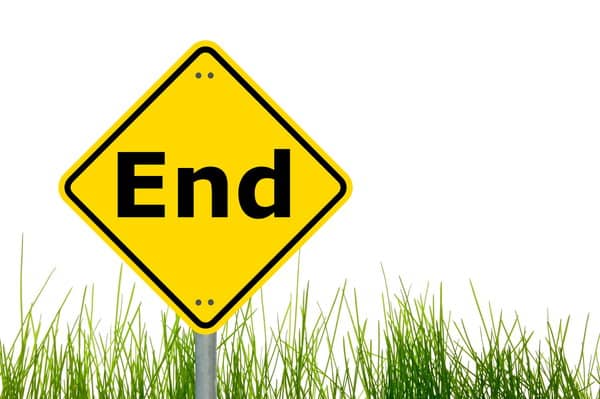What happens to Roger at the end of Lord of the Flies? In the Lord of the Flies, a group of boys stranded on a deserted island struggles to maintain order and morality as they descend into savagery. As the story progresses, the characters’ true natures are revealed, and alliances are formed. One character, in particular, stands out for his descent into darkness. Initially introduced as a quiet and obedient boy, Roger becomes increasingly violent and sadistic as the story unfolds. By the novel’s end, he has committed a heinous act and becomes a loyal follower of the ruthless Jack. The question remains, what ultimately happens to Roger? Does he continue down this dark path, or does he find redemption? In this article, we will explore the fate of Roger and what it reveals about the novel’s themes.
What happens to Roger at the end of Lord of the Flies? (Complete Answer)
In William Golding’s novel Lord of the Flies, Roger is one of the boys stranded on the island. Initially portrayed as a quiet and obedient child, he slowly descends into darkness as the story progresses. But what happens to Roger at the end of the Lord of the Flies? By the end of the story, Roger has committed a horrific act and become a loyal follower of the ruthless Jack.
At the book’s climax, Roger is instrumental in the murder of Piggy, one of the few characters still holding onto their civilized values. Roger’s role in the brutal killing of Piggy marks a turning point in the story, as it shows that the boys’ descent into savagery has reached a new low. The fact that Roger is a key player in this event demonstrates just how far he has fallen from his initial state.
After Piggy’s death, Roger becomes Jack’s henchman, carrying out his orders without hesitation. Roger has wholly embraced the savage mindset that Jack embodies, as he takes pleasure in inflicting pain and causing harm to others. In one scene, he even kills a sow by pushing a boulder on top of it, relishing his power over life and death.
Despite his horrific actions, Roger does not meet a violent end himself. His fate is left somewhat open-ended. In the novel’s final moments, as the boys are being rescued and the chaos ends, Roger is chasing Ralph through the jungle with a spear. At this point, it seems that Roger is fully intent on killing Ralph, just as he helped kill Piggy. However, before he can do so, the Naval Officer arrives and stops the chase.
The fact that Roger is prevented from carrying out his plan to kill Ralph leaves his ultimate fate somewhat ambiguous. He may have continued down his path of violence and destruction, causing more harm to others. On the other hand, it is also possible that the arrival of the naval officers and the return to civilization prompted him to reflect on his actions and seek redemption.
How does Roger change throughout the book?
Roger undergoes a transformation from a quiet and intense older boy to a sadistic and brutal terrorist over the course of Lord of the Flies. Initially, Roger is a minor character who seems to go along with the rest of the boys’ hierarchy and doesn’t pose a significant threat. However, midway through the book, Roger’s cruel tendencies begin to emerge. In one episode, he terrorizes the littlun Henry by throwing rocks at him. Later on, Roger becomes increasingly savage, willingly participating in the killing of the sow, as well as planning and participating in the brutal killing of Piggy. By the end of the book, Roger is fully transformed into a violent and vicious boy who enjoys causing pain to his peers.
Who is more evil Jack or Roger?
Roger is more evil as he deliberately harms others simply for his own enjoyment. In Chapter 1, Roger is described as a boy who keeps to himself with avoidance and secrecy, which suggests he has always had a tendency towards isolation and secrecy. Additionally, it is mentioned that Roger’s secret is that he is, in some ways, more evil than even Jack. This implies that Roger’s impulses towards violence and cruelty are even more extreme than Jack’s. Throughout the book, Roger demonstrates his evil tendencies by torturing and killing the other boys, including Piggy, without hesitation or remorse. His actions are purely motivated by his own sadistic nature, making him a more evil character than Jack.
Why is Roger more evil than Jack?
Roger is portrayed as more evil than Jack because his motives for hurting others are different. While Jack enjoys the thrill of the hunt and pursues leadership, Roger is depicted as a sadist who simply likes to hurt people. He derives pleasure from causing pain to others, which highlights his malicious and cruel nature. In contrast, Jack’s actions are primarily driven by his desire for power and status within the group. While both characters display violent behavior and a lack of empathy, Roger’s enjoyment of causing harm sets him apart as the more evil of the two characters.
Conclusion
In conclusion, by the end of Lord of the Flies, Roger has become a genuinely monstrous character, responsible for some of the most heinous acts in the novel. Although his ultimate fate is not explicitly stated, it is clear that he has lost touch with his humanity and embraced the darkness within himself. His story warns about the dangers of unchecked power and the descent into savagery.
